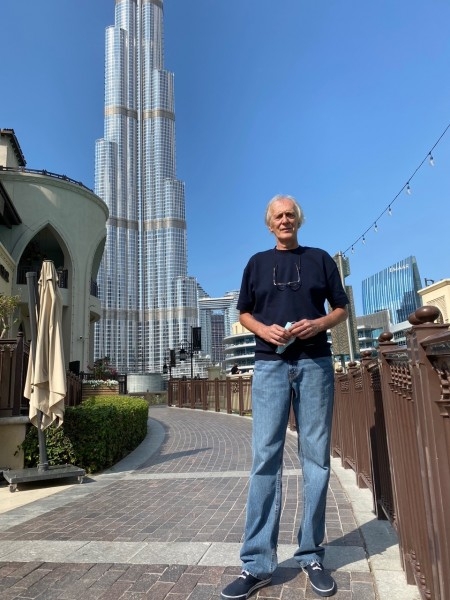 Photo: Lična arhiva
Photo: Lična arhivaIn the 1990 photographs of Velimir Ljubibratić, a landscape architect from Serbia, Dubai as we know it today looks completely different. There is no hint of modern outlines. When he and his wife Sanja, more than three decades ago, arrived in the United Arab Emirates from Belgrade, the "city of skyscrapers", the "capital of futurity,", the urban epicenter of the Middle East, or whatever Dubai is now called, it did not have a single traffic light, and the number of inhabitants was ten times smaller. That is why the conversation with Mister Velimir, as he was addressed by his colleagues in Dubai, is quite an instructive chronology that tells not only about a successful career but also about the development of a world metropolis and the scope of landscape architecture in a part of the world where the climate is more than cruel to flora.
We had a conversation on a rainy afternoon in Belgrade, the day before his trip to Dubai, where he was recently re-engaged as director of landscape architecture at Bloom Holding. However, he did not leave the desert city until 2021, except during vacations, business trips, and a four-year "excursion" to Qatar, where he also laid out a path for public parks and gardens.
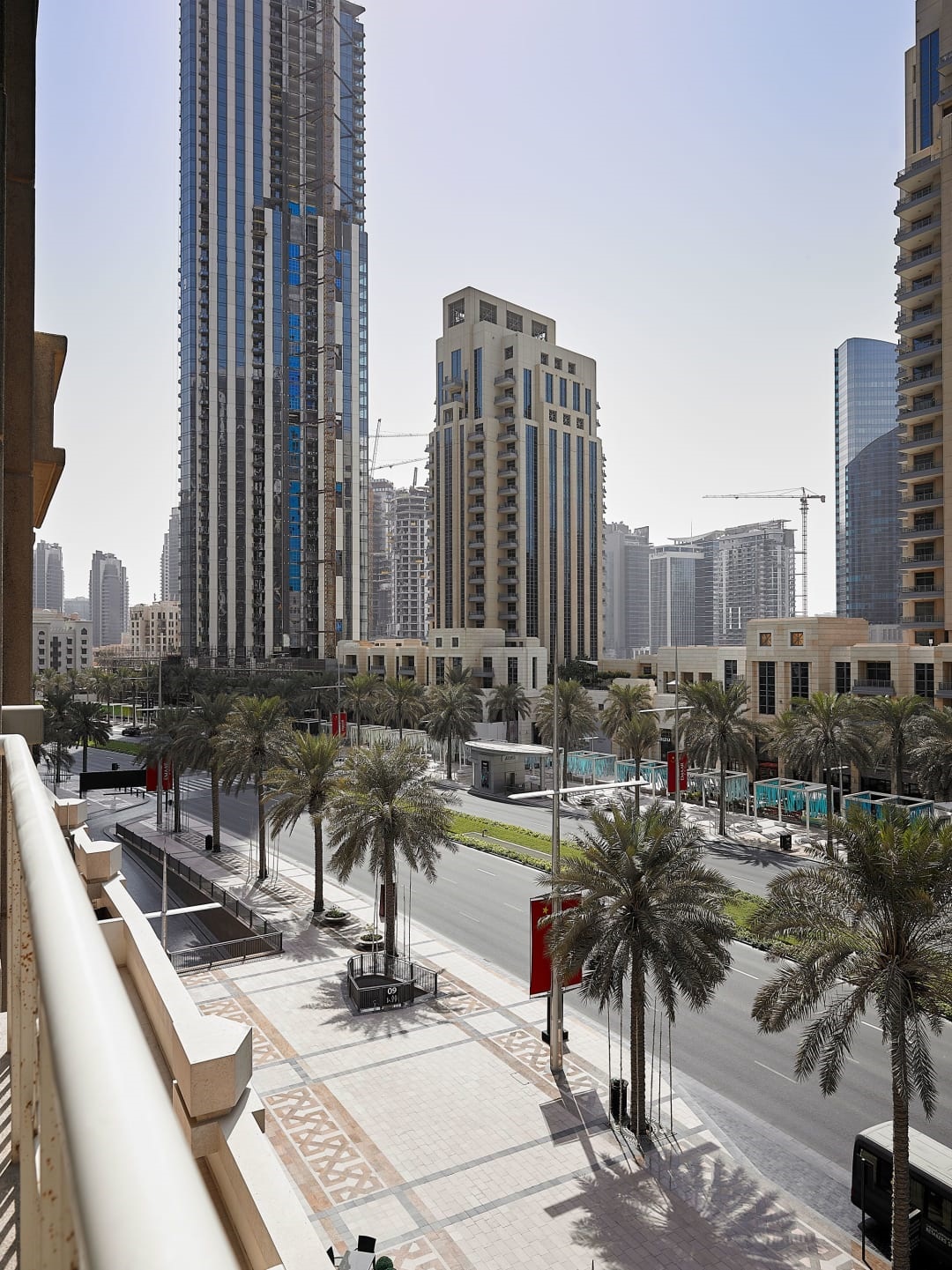
Burj Boulevard is 3.2 kilometers long and is paved with granite
Like all top professionals, he talks modestly about his career and enviable experience with a pen in hand, turning a sheet of white paper into a rich sketch in a few seconds.
Do you remember the first project you worked on when you arrived in Dubai?
Of course! It was Creekside Park, which spreads over an area of 100 hectares. By comparison, a football stadium, with all the tracks for athletics, is one hectare. Both my wife and I got a job in the city administration department, which was the only investor at the time (Dubai Municipality). At that time, Dubai looked like a typical desert settlement where the epicenter of life was the souk. There was one main city road; there were no parks; and there were no organized green public areas. Since there were no standards for landscape architecture, we made the designs on tracing paper with rapidographs, establishing along the way a guide for the arrangement of the city and forming a team to work on it. Work on Creek Park lasted four years. And while it was still in one of the phases, the next project followed—Al Mamzar Park, slightly smaller at 99 hectares. In fact, it was a sandbar on which the coast had to be modeled, four beaches made, and all the necessary attractions and facilities for walking, sitting, entertainment, and creating an atmosphere created. Everything was done parallel to Creek Park.
.jpg)
The first works on the construction of Umm Sequimm Park in the early 90s
Who were your colleagues, and how different was the work—not only because of the climate—compared to what you had been doing in Belgrade before that?
On both projects, the consultants were from England. Dubai did not have its own landscape architects, so I employed engineers from Egypt, India, and the Philippines. I demanded that all collaborators be technically savvy, from draftsmen to engineers. Essentially, I was in charge of everything, from designing, budgeting, and procuring materials to the execution of works and the selection of contractors, and I presented each of those phases of the project for approval by the board of directors. So it is not possible to compare it with what I was doing in Belgrade until then. Not only because of the dimensions but also simply because it is not the same category. In the Belgrade Institute, we mostly worked on detailed plans, smaller locations, and urban-technical requirements within the framework of the development of detailed plans. For the first 11 years in Dubai, my wife and I were engaged in the city department, working on countless projects, and were twice awarded recognitions at the level of the entire Middle East. It was the Creek and Al Mamzar parks that directed further development and dedication to the landscaping of the city.
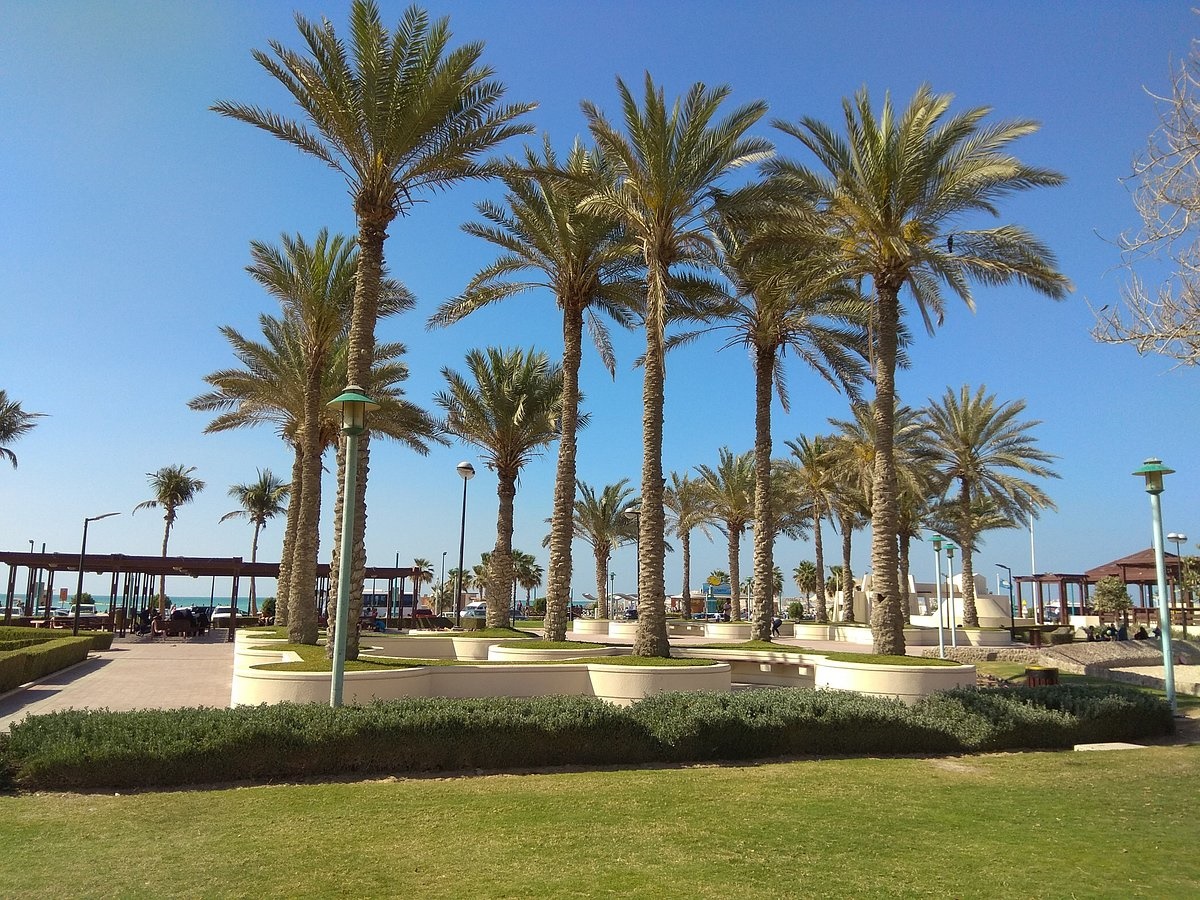
Umm Sequimm Park today
What was your inspiration? How creative could you be in the sea of sand, from which you made green oases?
Every project for me is an experiment, a challenge to do something new. You start from scratch, whether it’s sand or a white sheet of paper. Inspiration is everywhere; you just have to think about it. I always had in mind that I wanted something new—a new material, a new color, a new planting material. Whenever I heard about something new at congresses, I would apply it. In doing so, there was enough time to see how the solution I applied in the previous project reacted in the space. For example, while we were doing Creek Park, I made a temporary nursery on one hectare, and there we watched how the seedlings reacted to the climate and how they formed. We used various materials as they appeared on the market: stone, granite, marble, artificial stone, then artificial marble, glass, steel, and wood, because technology was constantly advancing.
.jpg)
Arranged public area in a residential area
Which plant species could possibly survive in that heat?
All those that grow in that climate zone—arid and subtropical. We ordered planting material from Texas, Florida, Singapore, Tuscany, Malaysia, India,... Due to my persistence, three Dalmatian cypress trees were planted in one park. Only one survived. When I visited it after 15 years, it had grown six meters, and that was only because the surrounding vegetation and trees created a microclimate for it. All the seedlings there need special treatment. For some types of trees, awnings made of perforated canvas are installed to protect the seedlings from the sun.
.jpg)
Greenery is standard along sidewalks and roads
Every tourist is amazed—how is it possible for the vegetation to grow so much? Where does the water for all those fabulous, huge parks, gardens, and fountains in Dubai come from?
They have an excellent irrigation system. Water was never a questionable issue, even when we were just starting out with greening. Processed wastewater is used for green areas. The city is supplied by huge plants for the processing of sea water through the process of desalination, which means that the water can be drunk but is not enriched with mineral substances. After that, the wastewater is further separated into solid and liquid substances that are recycled. The solid waste is made into fertilizer, and the liquid material is returned to the city for irrigation. Everything requires a lot of energy and energy sources, and they have them. Everything was exceptionally resolved decades ago.
.jpg)
Al Mamzar Park completely changed the appearance of the previously empty sandy peninsula
When did the urban boom in Dubai occur?
At the end of the nineties, more precisely in 1997 and 1998. High-speed roads, bridges, interchanges in the form of the so-called flyovers, and new settlements were built at an incredible speed, and all these investments were accompanied by the construction of green areas. My wife and I missed the first wave of that boom because we worked in Qatar from 2001 to 2005. There we encountered the same conditions as we had 10 years earlier in Dubai, which had completely transformed in just one decade.
What surprised you upon your return?
Everything! Although we lived in Dubai for 11 years before that, we literally could not recognize some parts of the city after four years of absence. We would ask ourselves: What street was that now, or what highway; where did the new neighborhoods, skyscrapers, and beaches come from? Those were the years when more and more tourists started coming. Everything became different.
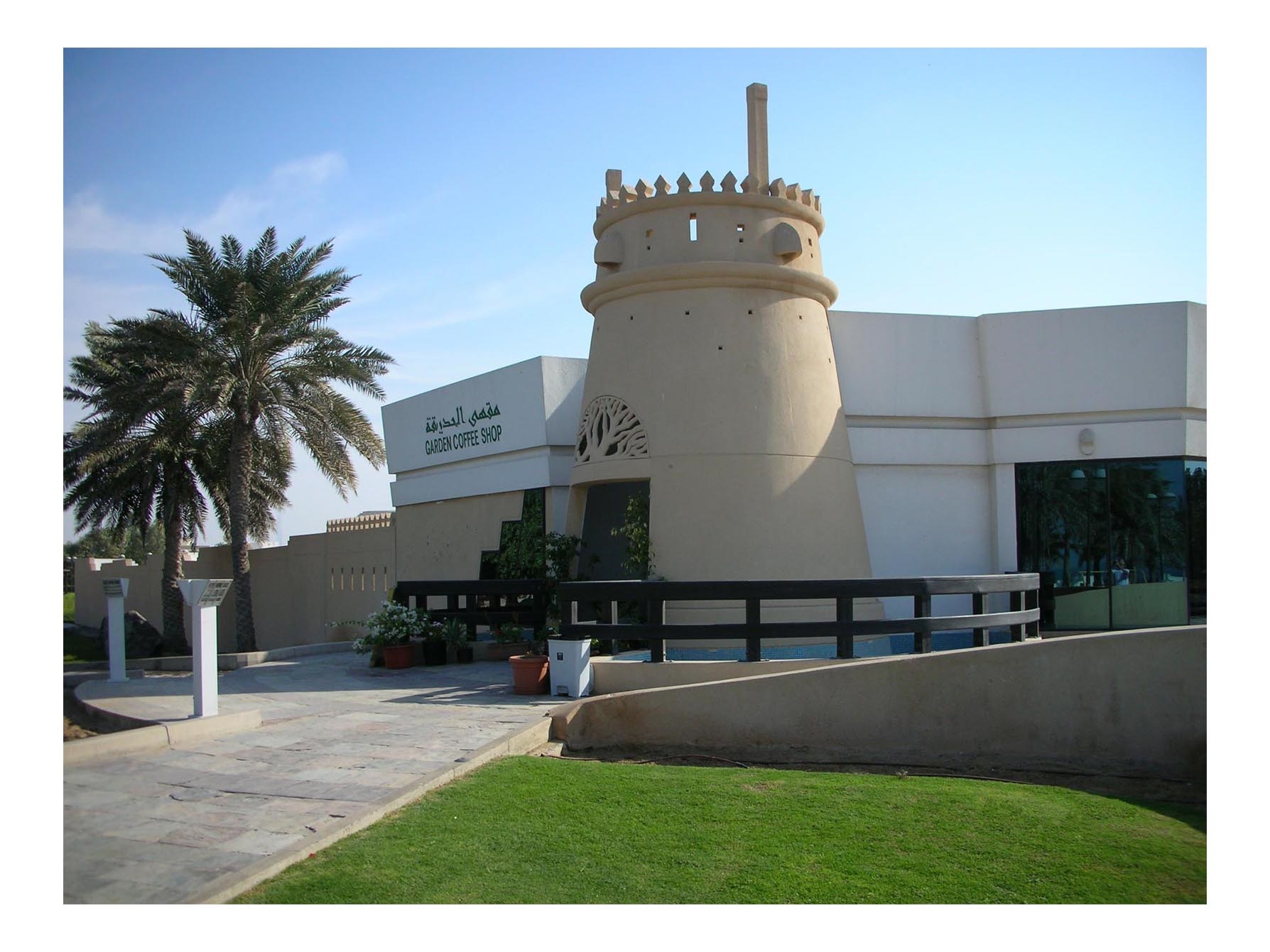
The entrance to the park made of plaster, reminiscent of old construction techniques in the desert
And then you started working for big investment companies?
Yes, I started working for EMAAR while my wife continued her job in the city department. I entered the project of building the Burj Khalifa and the entire new city center and became part of the team that was engaged in the construction of the tallest skyscraper in the world, the largest shopping mall, a musical fountain, the longest boulevard of 3.2 km, which would be all in granite, accompanying roads... Consultants were from the USA and England. I remember that for the boulevard we envisioned palm trees ten meters in height, although it was usually done with trees between five and six meters tall.
Was there any stress due to the enormity of the project?
The eyes of the whole planet were on us, and when the building started to sprout from the ground up, everything went kind of fast. How could there be no stress? Especially near the end of the whole project, since 2008, when the world economic crisis began. After that, I worked on the Arabian Ranches settlement project, which included several thousand villas and accompanying amenities. There were periods when I was working on 10 to 15 projects at the same time.
What has remained in your heart, what are you particularly proud of?
One small park, Umm Sequimm, which covers only 2.7 ha. That’s where I installed the first children’s playground and devices for disabled children. It was then on the outskirts of the city. I envisioned two circular areas for children to play, interconnected so that they can pass from one to the other completely safely, without cutting the sidewalk and bike paths. During the opening, I met Sheikh Al Maktoum, who particularly liked the park. He proposed that the park be a "ladies’ park". Thus, on Tuesdays and Thursdays it was a Ladies’ day, and on the other days it was an open park. That project was in competition for the Aga Khan Architecture Award (AKAA), which is awarded to executed projects and architects from Muslim countries. Out of 256 nominated projects, we made it to the final four.
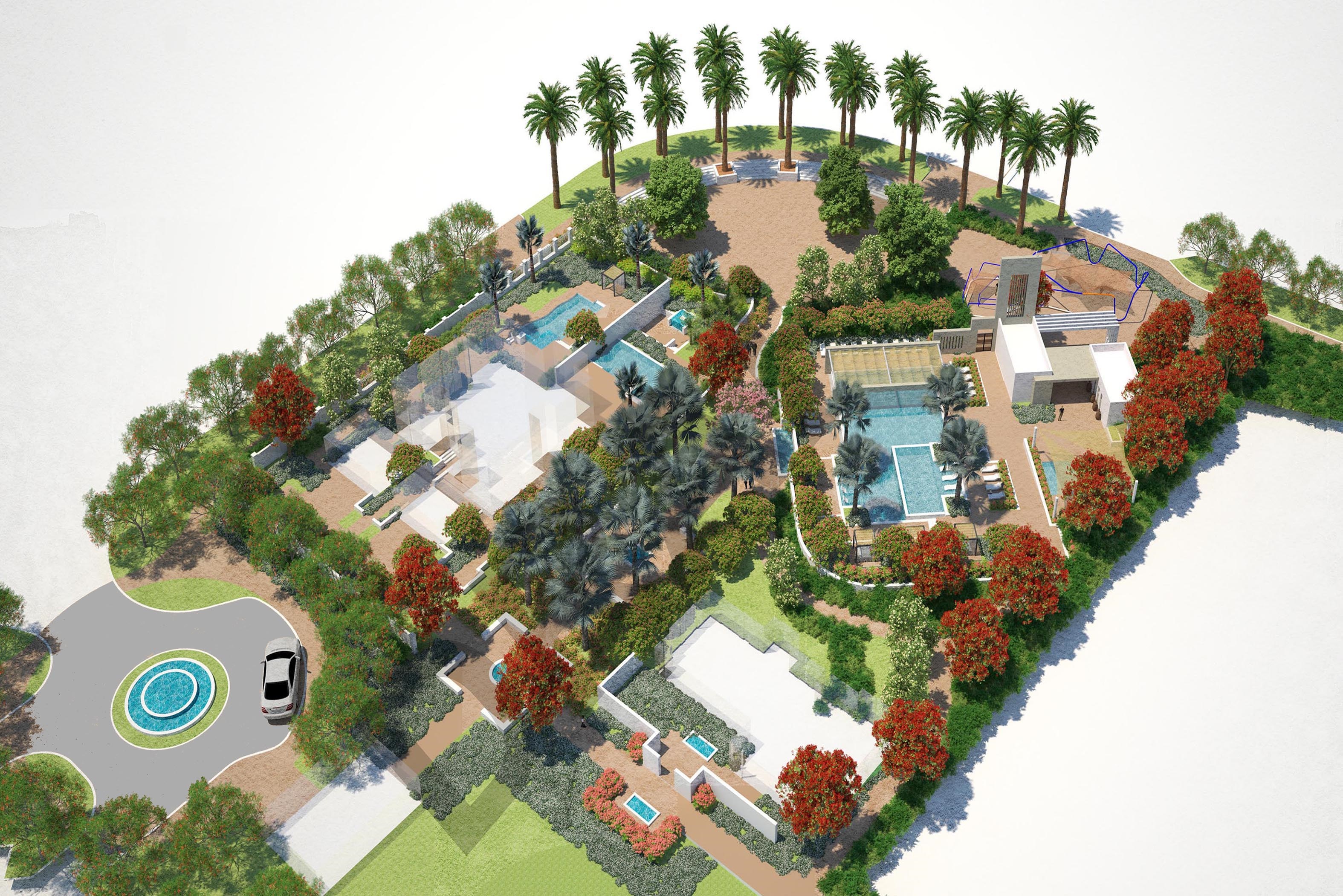
Rendering for one of the small parks in the local neighborhood
Do you have any advice for young colleagues?
While you are elaborating your preliminary idea, take a walk in the park with your thoughts. Ask yourself, Are there enough benches in it? Is it enough to have one, two, or five in a row? What kind of nightlight effect do you want to achieve? Will children be safe on playgrounds? Where do the shadows of the tree line fall during the day? Then, use everything you can to enrich the content: a bridge, a restaurant, bike paths, safe pedestrian corridors. Go to a location and just watch where people walk by.
What would you say to those who intend to work in the Emirates?
That they go there only after gaining experience and a university diploma. I saw many who came without experience and knowledge and returned to Serbia disappointed. If you know your business, you are valuable, and the Arab business world will appreciate that. The same applies to my profession and to all other professions. Keep in mind that Dubai is expensive, that you will have to rent an apartment and a car, and that the first three months are usually on probation. I didn’t switch from company to company just like that, but I received offers because of references and the trust they gained in me, and then I would think about it and decide afterwards. So, if you have no experience, you will have to start from the bottom. If, on the other hand, you have a rich CV, you will receive better offers.
WORLD-CLASS BIOGRAPHY AND REFERENCES
Velimir Ljubibratić graduated in horticulture at the Faculty of Forestry of the University of Belgrade. He worked for ten years at the Institute for City Planning of Belgrade (today the Urban Institute) and for two years at the Construction Institute.
During his 31 years of work in Dubai, he has lined up impressive projects in his portfolio. The parks he built from scratch, from the sand, are today a world attraction, and among them are: Al Mamzar Park, Umm Sequimm Park, Satwa Park, Karama Park, Creekside Park, Mushrif Park...
He built a recognizable personal style by designing urban oases, fountains, water bodies, from lakes to mini-rivers, botanical gardens, thematic units for children’s play, walking, parts intended for entertainment, learning, catering facilities built according to the old Bedouin architecture, amphitheaters and museums within parks of enormous dimensions. He worked for the largest investment companies from Dubai: EMAAR, ITHRA, Dubai Municipality, Meras...
He is a member, by international invitation, of ASLA – the American Association of Landscape Architects, which is the most influential in the world. He is a member of the Association of Landscape Architects of Serbia. This year, he is the president of the Council of the 10th International Salon of Landscape Architecture, which is held in the SASA Gallery in Belgrade in June.
By: Andrijana Cvetićanin
Photo: Personal archive